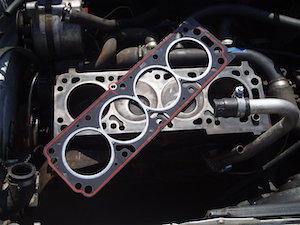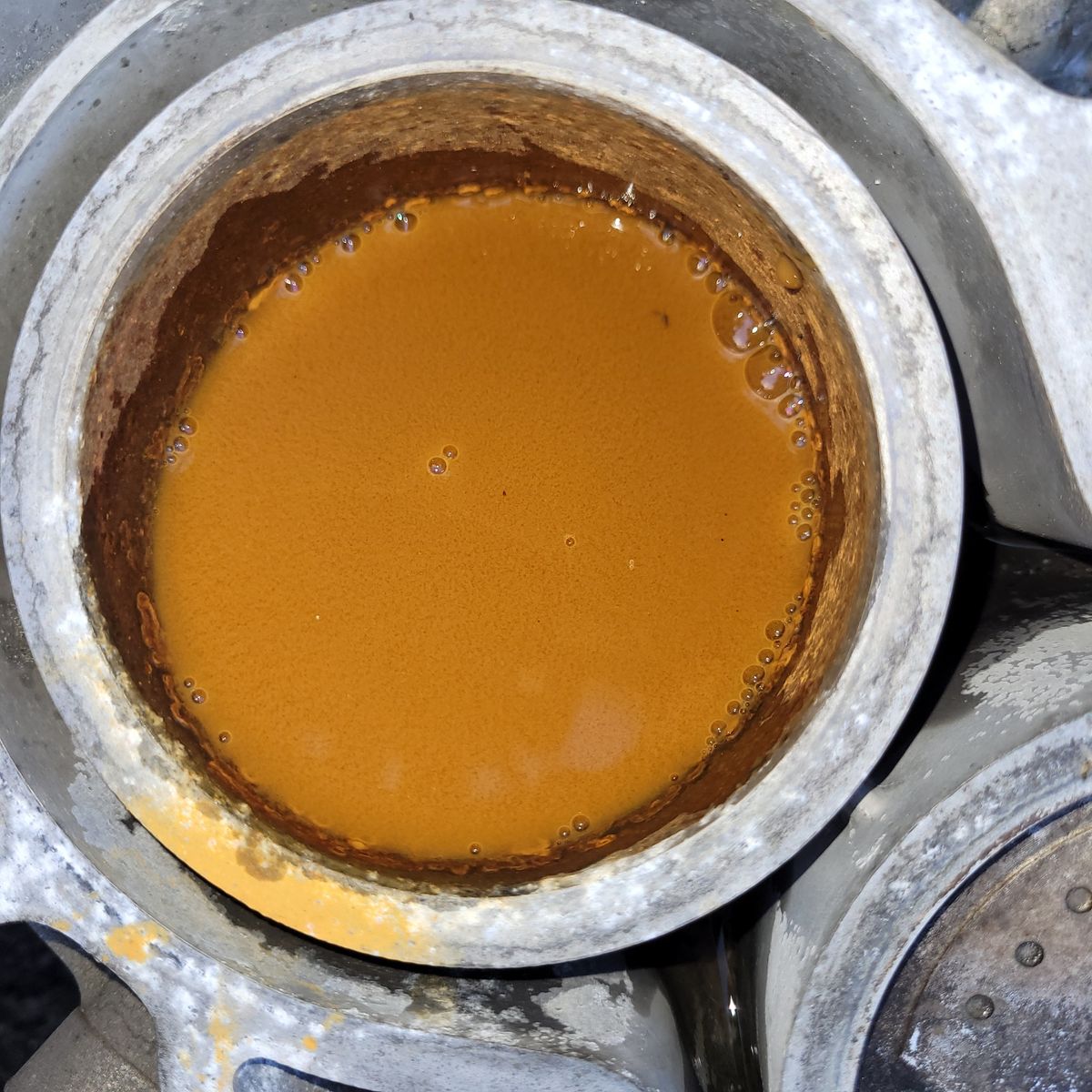If you’ve ever checked your engine oil and spotted water droplets on the dipstick, that’s a bit of a red flag worth paying attention to. Here in Hamilton, between all the stop-start driving on Ulster Street and those potholes out west near Dinsdale, cars go through some tough conditions. If you’re seeing rusty water around your engine, you need to sort it fast – rust and water together aren’t great mates with the typical NZ car. Let’s take a look at what’s going on.
So, What’s Rusty Water All About?
Rusty water’s pretty much what it sounds like. Rust forms when metal, especially the iron bits in your engine, gets wet and starts to break down. If you see a reddish or brown tinge, that’s rust coming off into the water. Not a good sign if you’re aiming for a healthy car engine, especially after all those chilly mornings rolling out of Cambridge or the run up to The Base on a muggy Hamilton day.
Why Am I Finding Rusty Water on My Engine?

Photo of a head gasket.
There’s a handful of reasons why rusty water might pop up. Here are some of the most common ones we see in the workshop, whether it’s a Daihatsu Sirion or a VW Polo, or even a Mazda Demio used for the school run in Rototuna:
Leaking head gasket. This one’s a classic – the head gasket keeps the engine sealed up tight, so when it blows or starts leaking, water or coolant can make its way into places it shouldn’t be. That ends up mixing with oil or sitting on your engine block, leading to rust. In our experience, this is super common after a lot of start-stop city driving or after a few hot summers. You can read a bit about it here. Don’t wait around – a crook head gasket needs fixing pronto.
Blown intake manifold gasket. We spotted this on a customer’s Peugeot 308 from Morrinsville just last week. When this gasket fails, coolant leaks into the oil, which doesn’t lubricate the engine properly. That causes the engine temperature to go up and can let rust start forming where you really don’t want it.
Knackered heater hoses. Those hoses shift hot coolant from the motor into your heater core – pretty handy on a foggy winter Hamilton morning! If one splits or cracks, rusty coolant can leak out and show up on the engine. It doesn’t matter if you’re driving a late-model Toyota Wish or an old Subaru Outback, those hoses cop a hiding over time, especially with all the speed bumps in Hillcrest.
Rusty radiator water. If you take the radiator cap off (only ever when the engine is cold, aye!) or peek in the coolant overflow bottle and see rusty water, that’s a sign the cooling system needs a good flush – more info on that here.
Why Should I Care About Rusty Water?
Bit of rusty water itself isn’t the end of the world. But it’s the reason it’s there that’s the real worry. Once rust gets into the metal inside your engine, things start breaking down – next thing you know, you’re up for an expensive repair. Imagine trying to get from Te Awamutu to Chartwell with your motor on the brink, not a great time. Left too long, you could be looking at seriously cooked engine parts or a car that keeps overheating just doing the Hamilton-Waikato school commute.
Plus, the causes (like that dodgy head gasket) are all problems you really want to nip in the bud. WOF Hamilton checks will pick some things up, but a bit of DIY checking between services helps too. Doesn’t hurt to have a mechanic sort it, whether it’s for a hybrid repair or just a general car service Hamilton.
Need a Hand With Rusty Water or Cooling System Flushes?
Noticed rusty water on your engine, radiator, or the coolant overflow? Bring it in! Our techs work on everything from late-model Suzukis to older Mercedes, utes, hybrids, and all the family wagons. Doesn’t matter if you’re coming in from Ngaruawahia or Glenview, we’ve seen it all. We’ll figure out where that water’s getting in, flush the system if it needs it, or get leaks sorted before they turn into dramas. For friendly and reliable service, just swing by or book now for a checkup. See you soon!

